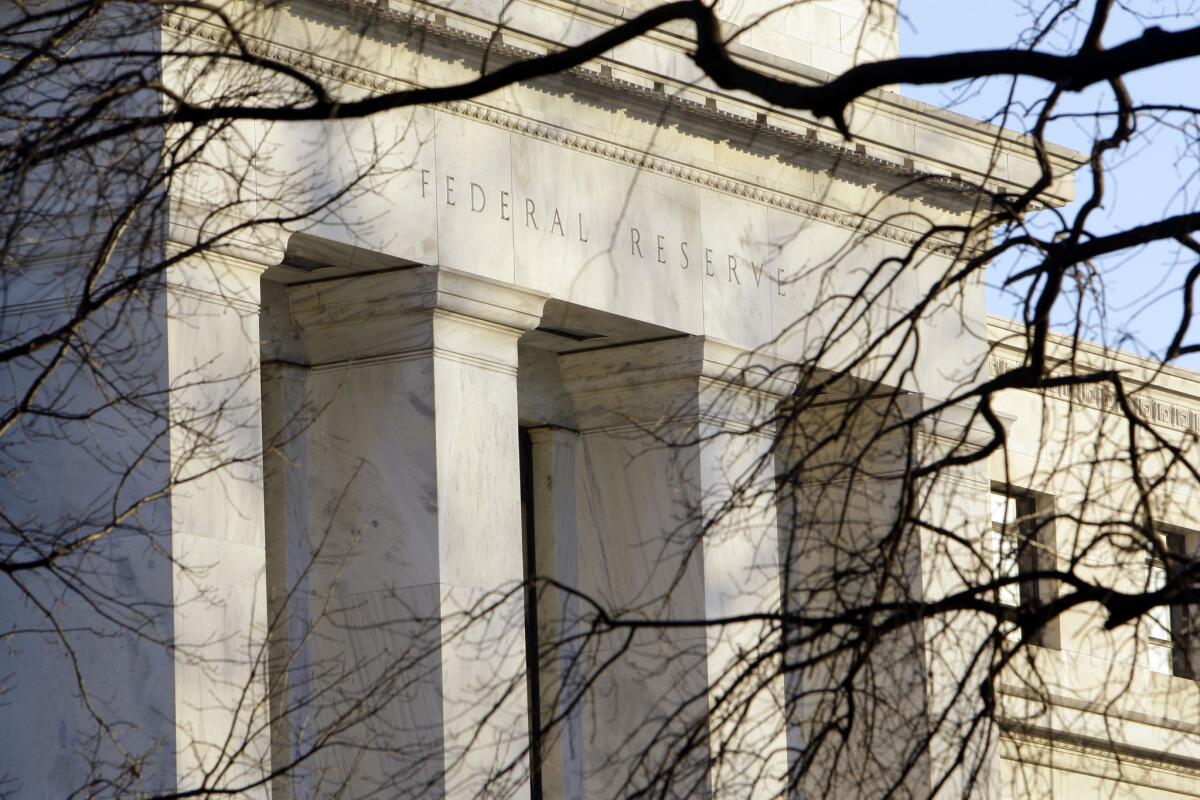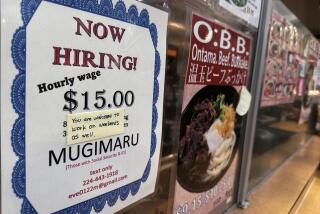Weak jobs report may extend Fed stimulus effort, analysts say

WASHINGTON -- After the lackluster September employment report, many analysts agree that the Federal Reserve is now likely to put off a reduction in its bond-buying stimulus program until next year, possibly as late as March.
That expectation was behind the cheery Wall Street reaction to the Labor Department’s disappointing report Tuesday: The economy added a modest 148,000 net new jobs last month, completing a third quarter during which job growth averaged just 143,000 a month -- down from 182,000 in the second quarter and 207,000 in the first three months of the year.
Although the jobless rate dropped a notch to 7.2% in September, thanks partly to workers leaving the labor market, the continued slowdown in new hires is likely to keep the central bank in a wait-and-watch mode.
Fed policymakers have talked about gradually reducing their $85-billion-a-month purchase of U.S. Treasury and mortgage securities, but they surprised markets by leaving the stimulus intact after their last meeting last month as officials expressed reluctance because of the slow progress and uncertain outlook in the job market and broader economy.
The Fed is expected to meet again next week, but officials are highly unlikely to make any substantive change in policy. And now many analysts are backing away from their previous forecast that the central bank would decide to dial back the stimulus at its final meeting of the year in mid-December.
It isn’t just the disappointing September jobs report. Analysts say the employment data for October also are likely to be weak, given the 16-day government shutdown this month. That report will be released Nov. 8. At the very least, next month’s report will be skewed by the temporary furlough of hundreds of thousands of federal employees, as well as some contract workers, making it difficult to assess the underlying health of the job market.
For the foreseeable future, analysts expect more of the same -- moderate job growth not unlike the numbers seen last month. Should that happen, it may still push the unemployment rate down gradually, because the labor force is not growing as fast as in past years, said Michael Gapen, an analyst at Barclays Bank.
“The recent pace of payroll growth, however, is unlikely to satisfy [Fed] policymakers,” he said. Some Fed officials have said they wanted to see job growth of about 200,000 a month. Gapen said he is now looking at March for the Fed to make its first cut in its bond-buying program.
Among the experts worried about the near-term outlook is Jason Furman, chairman of the White House Council of Economic Advisors, who warned Tuesday that the federal shutdown was likely to cost the economy “a decent number of jobs.”
Furman, speaking after the September jobs report was released, pointed to a jump in initial jobless claims early this month and a drop in Gallup’s job-creation index.
Economists have said the federal shutdown and political fight over raising the debt limit probably reduced overall economic output in the fourth quarter of the year by about 0.5 percentage points -- a significant amount given already weak annualized growth of about 2%.
“Overall, there’s no question this brinkmanship is going to cost us a couple of tenths on our growth rate in the fourth quarter and a decent number of jobs in October,” Furman told CNBC-TV. This shutdown is going to have ramifications for months to come, he said.
ALSO:
Unemployment drops to 5-year low, but job growth disappoints
Economic hit from impasse could endure
Obama to nominate Janet Yellen to lead Federal Reserve
More to Read
Inside the business of entertainment
The Wide Shot brings you news, analysis and insights on everything from streaming wars to production — and what it all means for the future.
You may occasionally receive promotional content from the Los Angeles Times.












